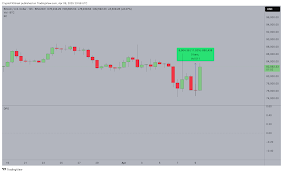The real estate market, much like the broader economy, is a complex interplay of various factors. As we navigate 2025, several key trends are emerging that will shape the landscape for both buyers and sellers. Understanding these shifts is crucial for making informed decisions.
Navigating the Economic and Political Landscape
The first half of 2025 is expected to be a period of stabilization for the South Korean economy, following recent political transitions. While interest rate cuts and eased lending have made home financing more accessible, the second half of the year could see a tightening of regulations. Many experts predict a strengthening of Stress DSR (Debt Service Ratio) loan regulations from July, which could significantly impact borrowing capacity.
The real estate market, including apartments and detached houses, is highly sensitive to interest rates, government policies, and housing demand. Furthermore, broader socio-economic and political changes can trigger unpredictable shifts. As seen with the recent reversal of the Seoul Land Transaction Permit Zone解除 (cancellation), anticipating and preparing for policy changes is incredibly challenging.
Key Trends Shaping the 2025 Real Estate Market
Let's dive into the major trends expected to influence the property market in 2025.
1. The Impact of Interest Rates
With interest rates on a downward trend in 2025, the burden of housing loan interest has lessened. This has naturally boosted buyer sentiment. However, specific eligibility criteria may still apply to benefit from these lower rates. It's advisable for first-time homebuyers or those without existing properties to actively seek out additional conditions that offer favorable interest rates.
2. Government Regulations: A Dynamic Factor
Government regulations continue to be a significant driver of market volatility. The recent fluctuations caused by the designation and subsequent cancellation of Land Transaction Permit Zones highlight how quickly the market can react. Predicting whether these policies will lead to price increases or decreases remains uncertain. Staying updated on regulatory changes will be paramount.
3. Shifting Housing Demographics
Demographic shifts are fundamentally altering housing demand. The rise of single- and two-person households is driving a sustained demand for small- to medium-sized units. Simultaneously, there's a continuous increase in the proportion of multi-homeowners, suggesting a growing trend in real estate investment or diversification.
Understanding Stress DSR and Its Implications
The Stress DSR system is designed to assess a borrower's ability to repay loans under stressful interest rate conditions, potentially reducing their maximum loan amount.
Current Lending Regulations
Currently, the Stress DSR Phase 2 is in effect. This applies a 0.75% stress interest rate to both mortgage and personal loans. The authorities are also closely monitoring overall household loan volumes and banking sector loan statuses on a monthly and quarterly basis.
Anticipated Changes in Second Half of 2025
Stress DSR Phase 3, scheduled to be implemented on July 1, 2025, will see a significant tightening. It will apply a 1.5% stress interest rate across all financial institutions for mortgages, personal loans, and other types of loans. This means individuals with the same income levels will likely face significantly reduced loan limits and stricter borrowing conditions compared to before. This could cool down the market by making it harder for some to secure the necessary financing.
.jpg)

_(Agastache_rugosa).jpg)





.jpg)

.png)















.jpg)









